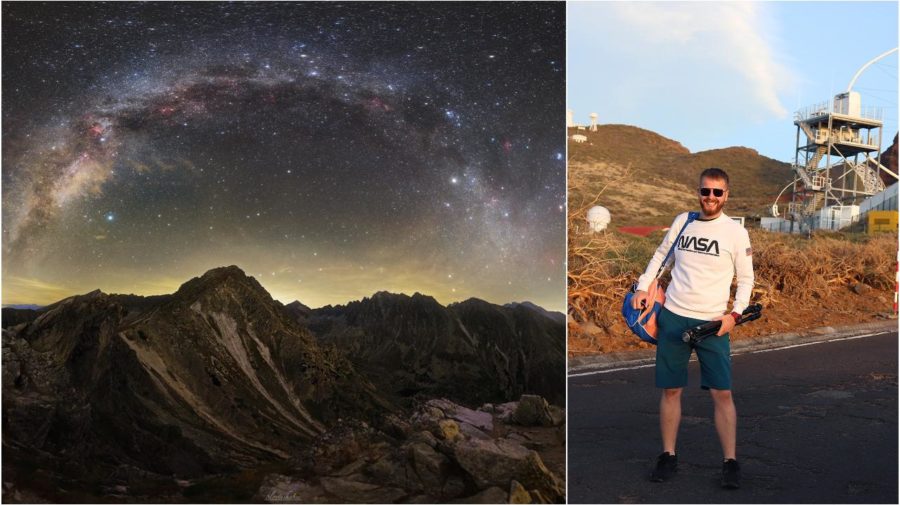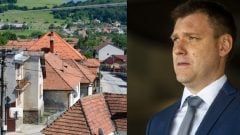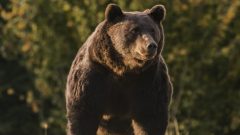
Veľký úspech slovenského astrofotografa Tomáša, získal ocenenie NASA už tretíkrát tento rok
- NASA vybral ako Astronomický snímok dňa fotografiu Slováka Tomáša Slovinského
- Za jeden rok sa tak jedná už o tretie Tomášove ocenenie z NASA
- Tentokrát však fotografia nevznikala na Slovensku, kvôli nej totiž cestoval až na Sardíniu

- NASA vybral ako Astronomický snímok dňa fotografiu Slováka Tomáša Slovinského
- Za jeden rok sa tak jedná už o tretie Tomášove ocenenie z NASA
- Tentokrát však fotografia nevznikala na Slovensku, kvôli nej totiž cestoval až na Sardíniu
Dňa 21. októbra americký Národný úrad pre letectvo a vesmír NASA vybral ako Astronomický snímok dňa APOD fotografiu Slováka Tomáša Slovinského. Za jeden rok sa tak jedná už o tretie Tomášove ocenenie z NASA. Tentokrát však fotografia nevznikala na Slovensku, kvôli nej totiž cestoval až na Sardíniu.
„Fotografia tmavej oblohy kombinuje viac ako 60 expozícií s rozpätím viac ako 220 stupňov a vytvára skutočnú zásobáreň klenotov nočnej oblohy,“ vo svojom príspevku napísala NASA. To, že za vytvorením jednej fotografie stojí množstvo práce, dokazuje práve táto snímka.
V Silvestrovský deň roku 2019 sa Tomáš so skupinkou priateľov vydal na niekoľkodňovú expedíciu za lovením tmavej oblohy a meteorov z meteorického roja Kvadrantidy. „V deň cestovania sme už boli druhý deň bez spánku, čo znamenalo že som prvý krát prespal celý silvestrovský večer a o novom roku sa dozvedel až ráno.“
Celá námaha však stála za to. Ako sa hovorí, šťastie praje pripraveným. V danú noc totiž panovali nezvyčajne prajné podmienky.
„Na chvíľku sa zdalo, že hviezdy sú ešte viac na dosah,“ hovorí Tomáš. Fotografii dominuje zimná Mliečna cesta, známe súhvezdie Orion a okolité hmloviny, zelené a červené žiarenie atmosféry, airglow, no najmä Kvadrantidy, meteorický roj s každoročným maximom okolo 3. januára.
NASA ocenila fotografiu mladého Košičana. Zachytáva nočnú Oravu počas Vianoc
Keď fotografie nesú odkaz
Tomáš z Oravy urobil dokonca sériu fotografií, ktoré niesli istý odkaz. Poukazovali na niekdajší život a na to, ako videli nočnú oblohu ľudia v minulosti – bez svetelného znečistenia. Medzi iné zaujímavé fotografie patrí napr. zodiakálne (zvieratníkové) svetlo a protisvit zachytené vo Vysokých Tatrách a na La Palme.
„Jedná sa o odraz Slnečného svetla na medziplanetárnej hmote pozdĺž úrovne ekliptiky. Nazýva sa aj zvieratníkové, pretože prechádza cez súhvezdia zverokruhu. V Českých Beskydách som zachytil zaujímavé tiahnúce sa airglow (žiarenie atmosféry), ktoré môžme pozorovať aj u nás,“ vysvetľuje fotograf.
Toto žiarenie podľa Tomáša vyvolávajú rôzne procesy v zemskej atmosfére, súvisiace aj so Slnkom. Na Slovensku sa talentovanému fotografovi v tomto roku podarilo zachytiť aj meteorický roj Perzeidy či zaujímavé čiastočné zatmenie Mesiaca zahalené v oblakoch.








